Parameters and details
The fourth Ninja was a pleasant surprise (mainly because of its unattractive predecessor). Scythe used improved version of the first two designs, and shortly after created popular Fuma series based on Ninja 4. Fuma rev. A was the best deal for the money, although the current second version is a bit different story. Now there’s the new Ninja 5 that looks very promising. The core remains unchanged, but the cooler is bigger and stronger than before.
Basic parameters
| Parameters | Scythe Ninja 5 | |
| Compatible sockets | AMD AM4, AM3(+), AM2(+), FMx(+), Intel LGA 115x, 2066, 2011-x, 775 | |
| Measurements (H/L/W) fan included | 149 × 130 × 138.5 mm | |
| Weight of the heatsink, fan included | 927/1202 g | |
| Number and thickness of heatpipes | 6× 6 mm | |
| Thickness (and gaps) of ribs | 0.4 (2,2) mm | |
| From the middle of the base to the edge of the fan (and heatsink)* | 90 (65) mm | |
| Possibly conflicting RAM slots and collision height** | 2 – 4 (41 mm) | |
| Fan | 2× 120 mm | |
| Starting RPM (and voltage) | ~ 434 (5,91 V) | |
| Max. RPM | ~ 834/834 | |
| Bearings | fluid | |
| Approximate price (tichepc.sk) | 57,50 eur |
*These measures indicate distances between the cooler and RAM slots, or more precisely the nearest PCIe × 16 slot.
**The data reflect the situation on Mini-ITX boards which typically have 50 mm from the center of the socket to the first slot. With the ATX format, it can be up to 7 mm more and that means one extra slot and a wider compatibility than is mentioned in the table. We measured the height limit with fans that are aligned with the maximum specified coolers height.
Details
Before we get to the point, we’d like to mention that the protection of the components in the package has improved. This was one of the usual drawbacks of Scythe coolers, but this time, the heatsink is safely fixed in a foam.
The transformation of the heatsink is minimalistic, the least significant in the series. The basic features are the same as before, and the difference in the shape of the ribs is barely noticeable, they are slightly extended on the sides. Dimensions in both axis remained virtually unchanged. Only the depth is 5 mm bigger, which is probably because of the overhang of the clamping brackets for fans. Either way, the height of the heatsink is the same and the weight increased to 145 grams.
The original number of ribs (36, Ninja 4) was increased by another five (Ninja 5), and they have the same thickness (0.4 mm). Just the gaps between them got narrower, from 2.6 to 2.2 mm. The construction is solidly massive, only the top rib doesn’t feel very firm.
The direction and distribution of heatpipes is identical to the design of its older brother. The base itself is convex in both directions, but significantly more in the direction of the heatpipes, it is barely visible in the opposite direction.
The surface of the base is glossy, almost as a mirror, and there is a soft circular scoring. It is so soft that you cannot even feel it, just see it. However, it is enough for compounds with higher viscosity. By the way, according to tests, the supplied one is pretty decent.
There are some radical changes when it comes to fans. Only the format is the same – 120 mm. The first change is that there are two fans in the package, not just one. The intention is obvious, to make cooling of the rear area of ribs more effective even at low RPM. Overall, the max. fan speed is quite low (maximum at 12V is 834 rpm) and the min. limit is extremely low, the rotor is still active even at 2.52V (60 rpm), although this setting is not very “healthy” for the fans and they make an odd noise that doesn’t go away until 3.45 V (~ 200 rpm). From this point, the only source of sound is the aerodynamic noise. Casual operation of SU1225FD12L-CDP (the full name of the model) doesn‘t produce any undesirable, parasitic sounds.
The bearings have also been improved – the typical slide type (Ninja 4) was replaced by the fluid type (FDB). Even though they don’t have the robustness of the high-end Scythe Grand Flex. The original Ninja 5 fans weigh 130 g (per piece), so they are rather lighter than heavier, and the blades have an average thickness.
There are eleven blades in total, so two more than before, but it seems that the area of one blade is the same. There is no milling (that helped to direct the airflow) on the surface this time, and the manufacturer has also simplified the design by removing the manual voltage control switch which could be used to limit PWM. One thing that was added is rubber pads in the corners.
As a part of the installation kit, you also get a long-tip screwdriver that is necessary for the installation of the heatsink. The mounting system is otherwise classic – extended backplate with long screws, a pair of brackets, and a cross clamp which in this case is already pre-installed on the cooler‘s base.
Thanks to its construction, Ninja 5, as one of few coolers (and probably the only one with a weight over one kilogram), makes it possible to install the cooler on the socket with mounted fans. The assembly process is simple and comfortable. Of course, you need to keep in mind that it is a large cooler and the installation can be a bit tricky in smaller cases.
With the fifth Ninja, Scythe has also tried to improve compatibility with RAM modules. You can put modules with a height of up to 6 cm to the first two slots, but only if you don’t use fans. With fans, the second slot is limited to 4 cm (although it’s not that terrible, majority of modules can fit in, including the top G.Skill Flare X). You can also put your fans higher, but to maintain 6cm compatibility this way, the overall height of the cooler will increase to 175 mm, which might be too much for a lower chassis.

You don‘t need to worry about a conflict with your graphics card, even motherboards with the first Express × 16 slot closer to the processor are fine. An exception could be some older Mini-ITX boards. It’s 69 mm from the center of the socket to the PCB/backplate of the graphics card.
It‘s a shame that Scythe has abolished exclusive fan installation on all four sides, which made Ninja coolers exceptional. Now you can choose from two sides only. Especially AMD owners will not be happy about this since they can usually orient the heatsink only in one direction, so it’s impossible to direct the airflow to the ceiling.
- Contents
- Parameters and details
- Test procedures
- Automatic regulation
- Max. RPM
- 45 and 42 dBA
- 39 and 36 dBA
- 33 and 31 dBA
- Conclusion





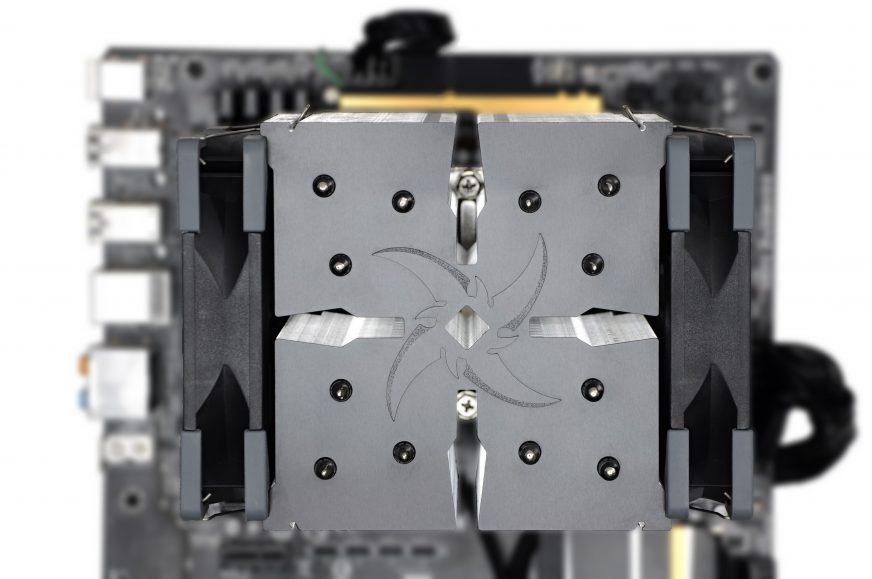
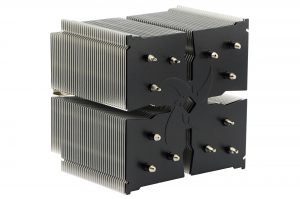
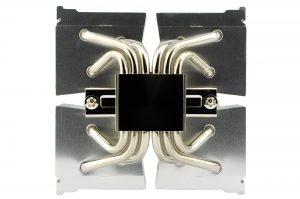
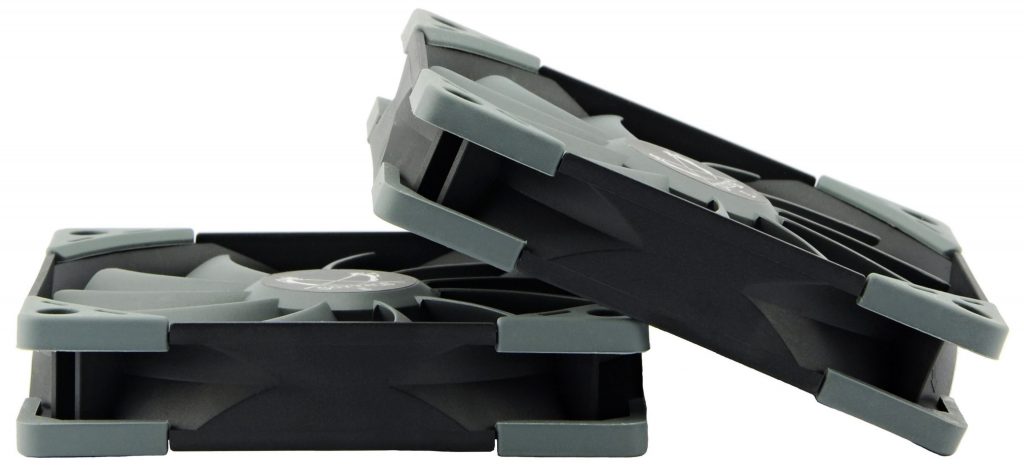

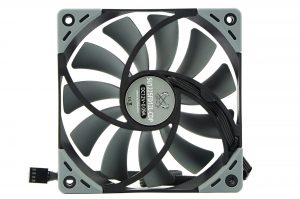
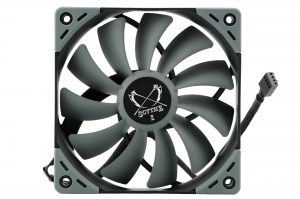
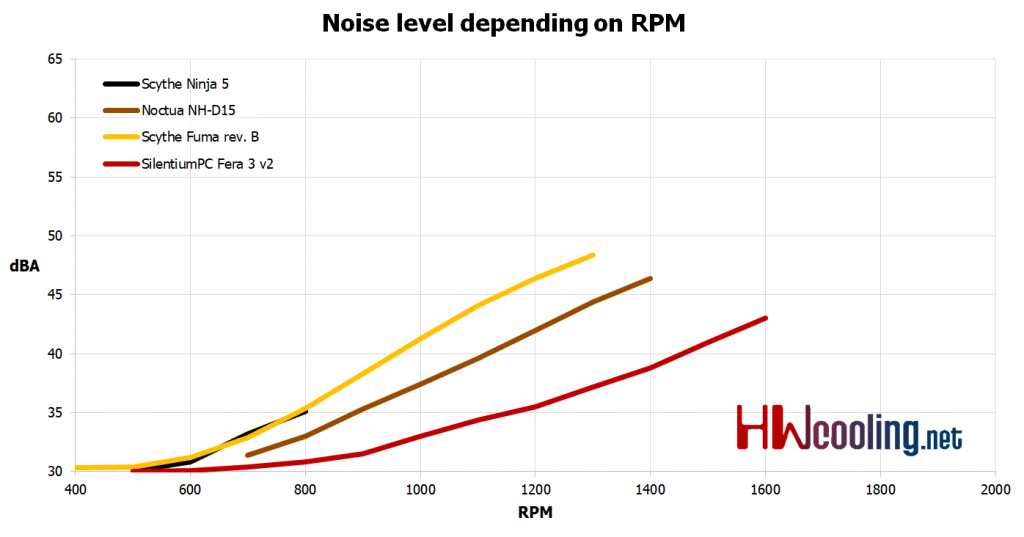
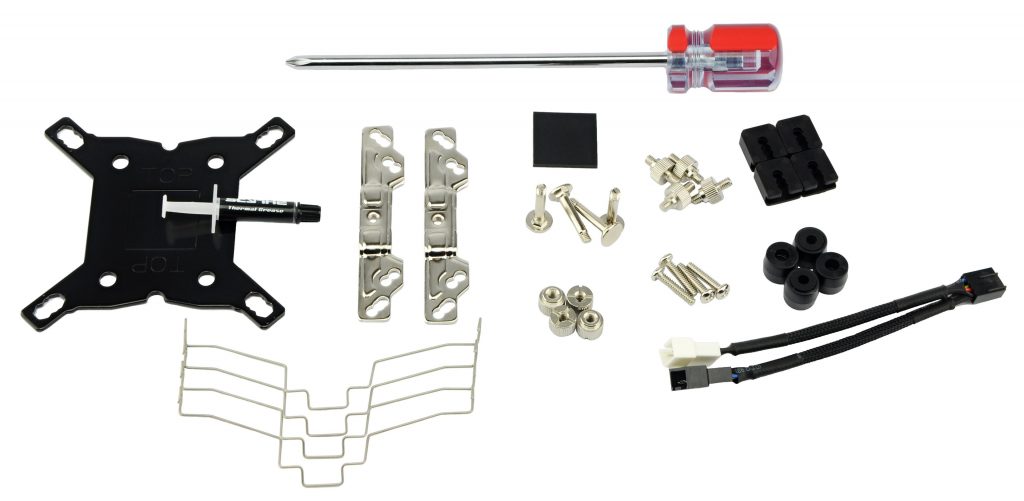
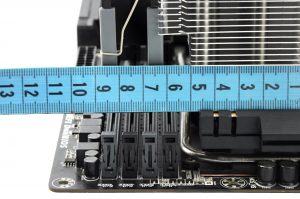
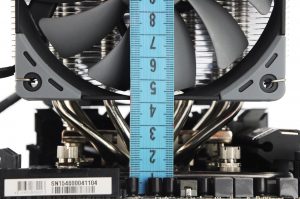
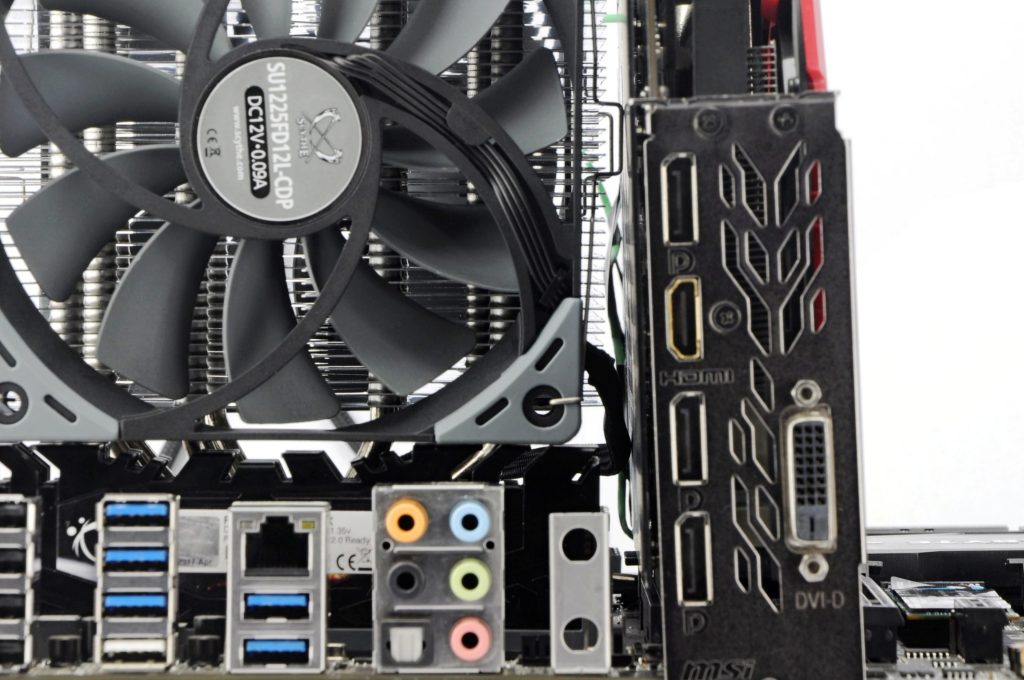
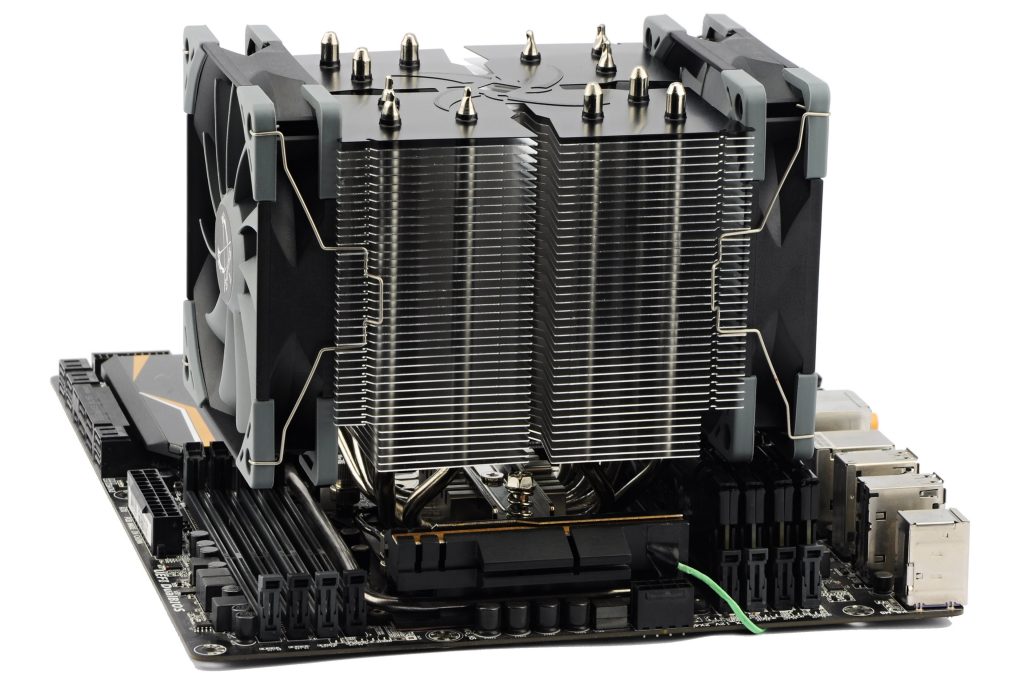




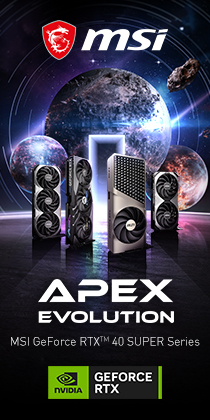


Hi !
Thank you for the test. I like your methodology of testing.
Can you use the therlmaright le grand macho rt ? Which is probrably the best cpu cooler
The noctua scythe fan graph is interesting I’d like to see temperatures and db comparing the included scythe fan vs a noctua.
i bet if you got better fans this thing would kick ass!
A passive or semi-passive setup for comparison with the Fuma or Zalman Passive Cooler would be great.